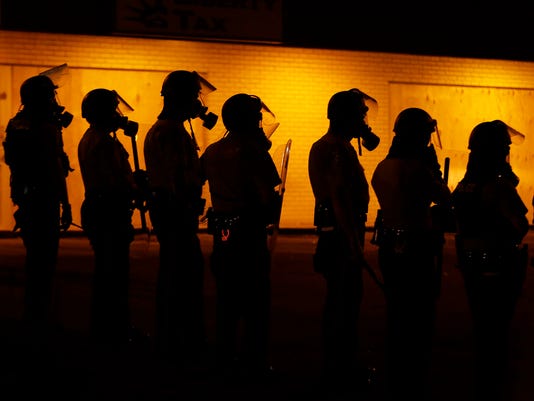reprint from 2014 BGM Published 12:44 a.m. ET Aug. 28, 2014 |

(Photo: AP)
In the 1980s in South Africa, I witnessed firsthand the apartheid state’s ferocious attempt to crush rebellion in local townships and wars with neighboring states. Central to this effort was the South African Defence Force’s home-grown equipment, most notably Casspirs, armed personnel carriers designed to shelter white troops from stone-throwing students at home and roadside bombs in neighboring states. One of them crushed to death one of the most promising black graduate students I ever met there.
Almost 40 years later, I was shocked to see that one of these Casspirs, after service in South Africa and then Afghanistan, had found a new home in Broome County courtesy of the 1033 federal program that has transferred used military equipment to local law enforcement agencies all across the country. Broome County and local police have added to their equipment inventories not only the Casspir but also armored Humvees, large military trucks, night vision equipment and a wide assortment of military rifles.
These are weapons of war, not policing — and as in Ferguson, Mo., their possession inevitably triggers military responses to civil protest, which in turn only magnifies violent resistance. State officials in Missouri eventually realized this and replaced the militarized city police with state police, who quickly removed this equipment from the streets. This is a lesson being debated now around the country. It is equally hard to see where military equipment, repaired and maintained at considerable expense, has any use here. Improvised explosive devices (IEDs) have yet to be spotted on our streets. Equally absent are armed, infiltrating guerillas (from neighboring Canada to the north or Mexico to the south?).
More serious is the response to protest with excessive force and a warrior mentality. This is not mere speculation. Protests in Binghamton over racial harassment downtown in the last year and charges of racial profiling and brutality by individual police officers over the years, raise this prospect and draw the comparison with Ferguson ever closer. What we need, as in Ferguson, is not a militarized and isolated police force, but one that engages, interacts and is responsible to the local community.
Martin, a Johnson City resident, is longtime resident of Broome County and a professor in the sociology department at Binghamton University.
Leave a Reply